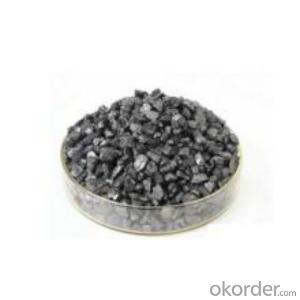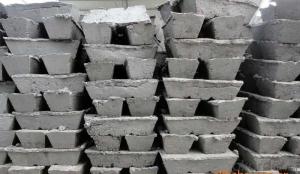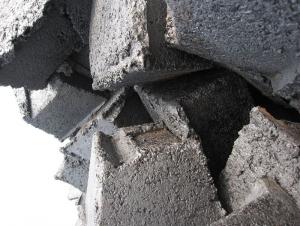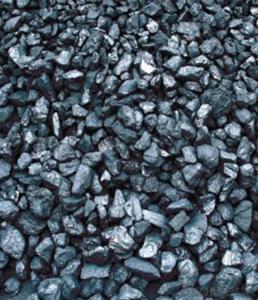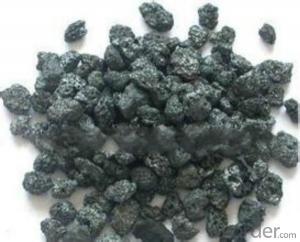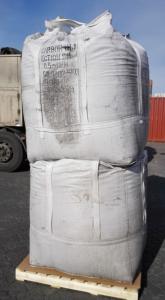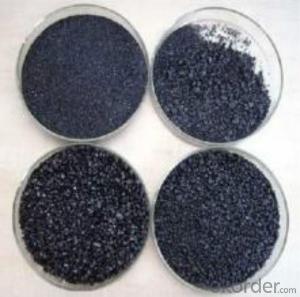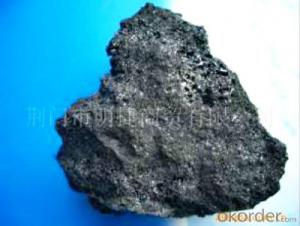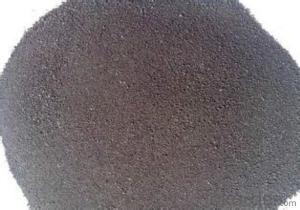FC 99% Calciend Petroleum Coke Manufactured in China
- Loading Port:
- Tianjin
- Payment Terms:
- TT OR LC
- Min Order Qty:
- 20.5
- Supply Capability:
- 2050 m.t./month
OKorder Service Pledge
OKorder Financial Service
You Might Also Like
Brief introduction
Calcined Petroleum Coke comes from delayed coke which extracted from oil refinery. Although Calcined Petroleum Coke contains a little bit higher level of sulfur and nitrogen than pitch coke, the price advantage still makes it widely used during steel-making and founding as a kind of carbon additive/carburant.
BaoSteel is world famous organization. This calcined petroleum coke's raw material is from Bao Steel, which has great quality guarantee. Bao Steel also named this coke as Pitch Coke.
Features
Our product has follwing advantages:
The morphology, chemistry and crystallinity of recarburisers
have a major impact on the overall casting cost. The combined
application and cost benefits, which are derived through the
use of Desulco, enable foundries to manufacture castings in a
highly cost effective manner. It is playing more and more important role in the industry
reduces
Recarburiser consumption
Power consumption
Inoculant consumption
MgFeSi consumption
Furnace refractory wear
Scrap rate
Tap to tap time
Slag inclusions risk
Chill
increases
Casting microstructure
Productivity
Process consistency
Specifications
Products | CPC | ||
F.C.% | 98.5MIN | 98.5MIN | 98MIN |
ASH % | 0.8MAX | 0.8MAX | 1MAX |
V.M.% | 0.7 MAX | 0.7 MAX | 1 MAX |
SULFUR % | 0. 5MAX | 0. 7MAX | 1MAX |
MOISTURE % | 0.5MAX | 0.5MAX | 1MAX |
Pictures
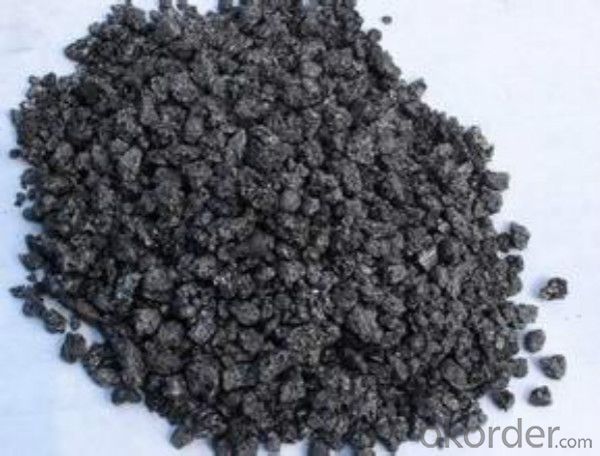

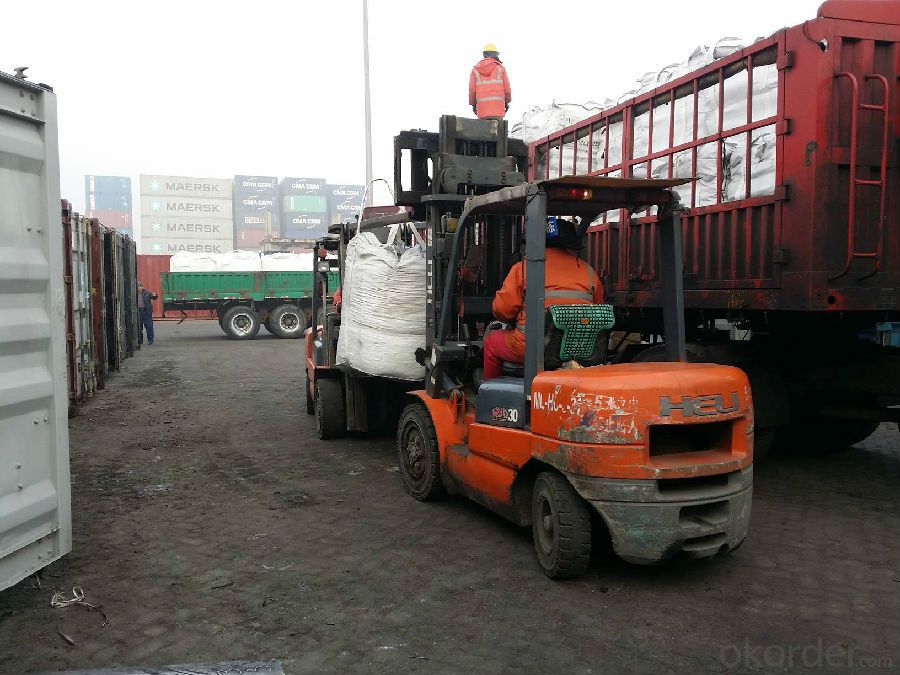
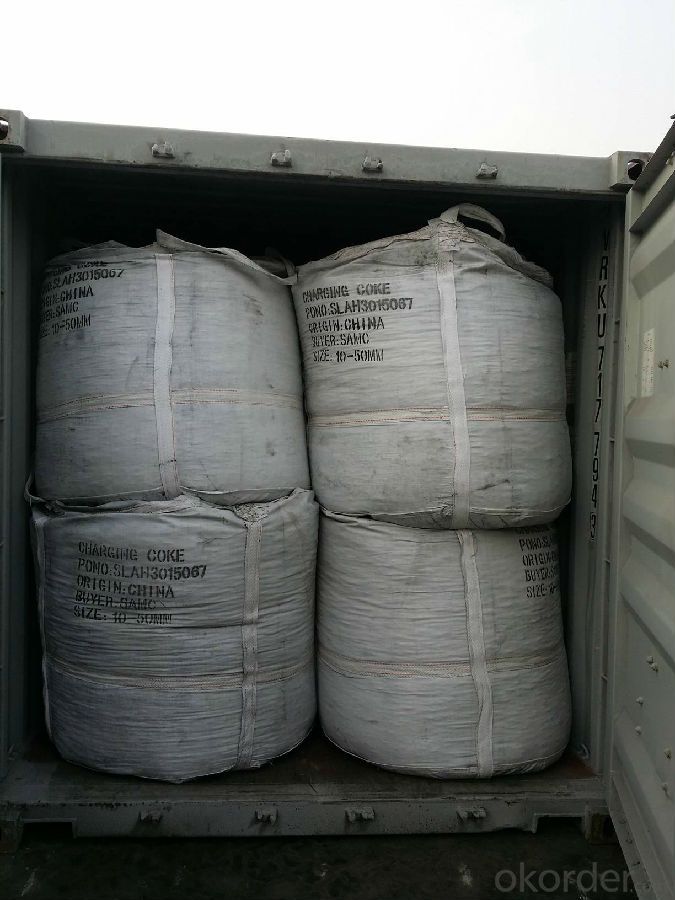
FAQ
1 What is the package?
In jumbo bag with/without pallet
2 What is the delivery time?
25 days after receiving the workable LC or down payment
3 What is the payment term?
T/T, L/C,D/P,D/A
- Q: Yes, I have a weapon, want to strengthen 11, said to be advanced furnace rock carbon, do not know how to get, look at the prawns pointing
- Pro, tell you an unfortunate news, out of the eighty furnace rock carbon, old horse recycling, burning their own boilers, and now we strengthen the use of colorless small crystal block, that is, the colorless small crystal block instead of the original furnace rock carbon.
- Q: What are the effects of carbon emissions on the stability of estuaries?
- Estuaries, which are highly productive and diverse ecosystems, are greatly impacted by carbon emissions. These emissions, primarily in the form of carbon dioxide (CO2), contribute to climate change and ocean acidification, resulting in detrimental effects on estuaries. Sea-level rise is one of the most significant consequences of carbon emissions on estuaries. As global temperatures increase, the melting of glaciers and ice caps causes sea levels to rise. Estuaries, being low-lying areas where rivers meet the sea, are particularly vulnerable to this rise. Consequently, higher water levels lead to increased flooding, erosion, and saltwater intrusion into freshwater systems within estuaries, negatively affecting their overall stability. Furthermore, the concentration of CO2 in the atmosphere leads to ocean acidification. When CO2 dissolves in seawater, it forms carbonic acid, which lowers the water's pH. This acidification has detrimental effects on marine life within estuaries, especially organisms with calcium carbonate shells like shellfish and oysters. The increased acidity makes it more challenging for these organisms to build and maintain their shells, resulting in reduced populations and biodiversity in estuaries. Climate change, caused by carbon emissions, also alters temperature and precipitation patterns in estuaries, disrupting the delicate balance of saltwater and freshwater. Estuaries rely on this balance to support their unique ecosystems. Changes in temperature and precipitation disturb this equilibrium, causing significant shifts in species composition and distribution. Some species may struggle to adapt, while invasive species may thrive, further destabilizing estuarine ecosystems. In conclusion, the effects of carbon emissions on estuaries are extensive and varied. Rising sea levels, ocean acidification, and climate-induced changes in salinity and freshwater availability all contribute to the degradation of estuaries and the loss of biodiversity. To protect and preserve these essential ecosystems for future generations, it is crucial to reduce carbon emissions and mitigate climate change.
- Q: How do plants and trees absorb carbon dioxide?
- Plants and trees absorb carbon dioxide through a process called photosynthesis. During photosynthesis, they use sunlight, water, and chlorophyll to convert carbon dioxide into glucose and release oxygen as a byproduct. This helps in reducing the amount of carbon dioxide in the atmosphere and contributes to maintaining a balance in the Earth's carbon cycle.
- Q: How does carbon affect the quality of indoor air?
- Carbon can have a significant impact on the quality of indoor air as it is emitted from various sources such as burning fossil fuels, cooking, and smoking. High levels of carbon can lead to poor air quality, causing symptoms like headaches, dizziness, and fatigue. Additionally, carbon monoxide, a toxic gas produced by incomplete combustion, can be lethal in enclosed spaces. Therefore, it is crucial to properly ventilate and monitor indoor areas to mitigate the negative effects of carbon on indoor air quality.
- Q: What are the advantages of carbon nanotube transistors?
- Carbon nanotube transistors offer several advantages compared to traditional silicon-based transistors. Firstly, carbon nanotubes have excellent electrical properties. They possess high electron mobility, which means that electrons can move through them quickly and easily. This allows for faster switching speeds and higher operating frequencies, making them ideal for high-performance applications such as computers and communication devices. Secondly, carbon nanotubes have a very small size. They can be as small as a few nanometers in diameter, which is several orders of magnitude smaller than the feature sizes of silicon transistors. This miniaturization potential enables the development of highly compact and densely packed electronic circuits, leading to higher integration levels and increased device functionality. Additionally, carbon nanotubes are more resistant to heat and have better thermal conductivity than silicon. This means that they can handle higher temperatures without degrading, allowing for more efficient operation and reducing the need for complex cooling systems. It also enables the fabrication of devices that can withstand harsh environments, making them suitable for applications in aerospace, automotive, and defense industries. Furthermore, carbon nanotubes are mechanically strong and flexible. They can be bent and stretched without breaking, making them suitable for use in flexible electronics and wearable devices. Their mechanical robustness also ensures long-term stability and reliability, leading to improved device performance and longevity. Lastly, carbon nanotube transistors can be fabricated using existing manufacturing processes, making them compatible with current semiconductor technologies. This means that they can be integrated into existing electronic systems without significant modifications, reducing the cost and time required for their implementation. Overall, the advantages of carbon nanotube transistors, including their high electrical performance, small size, thermal stability, mechanical strength, and compatibility with existing manufacturing processes, make them a promising alternative to traditional silicon transistors for future electronic applications.
- Q: What is carbon footprint labeling?
- The system of carbon footprint labeling provides consumers with information regarding the carbon emissions associated with a product or service. Its purpose is to educate consumers on the environmental impact of their purchases and empower them to make more sustainable choices. Typically, this labeling includes a measurement of the greenhouse gas emissions generated throughout the entire life cycle of a product, encompassing its production, transportation, and disposal. Consequently, consumers are able to compare the carbon footprints of various products and make well-informed decisions based on their environmental values. Carbon footprint labeling plays a vital role in promoting sustainability and urging businesses to reduce their emissions. Furthermore, it raises awareness about the influence that individual consumption choices have on climate change and encourages a transition towards more environmentally friendly alternatives.
- Q: Last night to go to the supermarket to buy 5 batteries, see Toshiba carbon batteries, I finally bought the super alkaline batteries, alkaline batteries and carbon is the difference in where? What kind of battery is best for digital cameras? Thank you
- Alkaline capacity, not drip waterThe camera needs to be chargedBuy expensive at the supermarket
- Q: How does carbon affect the formation of wildfires?
- Wildfires are not directly impacted by carbon, but their intensity and duration are heavily influenced by it. Carbon is a vital component of organic matter, including vegetation and deceased plants, which act as fuel for wildfires. When a wildfire occurs, the heat causes the carbon in these fuels to react with oxygen, resulting in combustion. This process releases energy in the form of heat, light, and gases, such as carbon dioxide (CO2) and carbon monoxide (CO). The presence of carbon-rich fuels significantly contributes to the spread and intensity of wildfires. Dry and dead vegetation, often referred to as fuel loads, are extremely flammable and enable fires to rapidly expand. Furthermore, the amount of carbon present in these fuels determines the amount of energy released during combustion. As a result, the higher the carbon content, the more intense the fire becomes. Additionally, the combustion of carbon during wildfires releases substantial amounts of carbon dioxide into the atmosphere. Carbon dioxide is a greenhouse gas that traps heat in the Earth's atmosphere, contributing to the greenhouse effect and ultimately leading to global warming. Elevated levels of carbon dioxide in the atmosphere worsen climate change, further impacting the frequency and severity of wildfires. In conclusion, carbon indirectly influences the formation of wildfires by acting as fuel for combustion. The carbon content in vegetation and deceased plants determines the intensity and spread of wildfires, while the release of carbon dioxide during combustion contributes to the long-term effects of wildfires on climate change.
- Q: How does carbon affect the quality of soil?
- Carbon plays a crucial role in improving the quality of soil. It enhances soil fertility by serving as a food source for beneficial microbes and earthworms, which aid in breaking down organic matter and releasing essential nutrients. Additionally, carbon improves soil structure and water-holding capacity, promoting better root growth and reducing erosion. Overall, the presence of carbon in soil is vital for its health and productivity.
- Q: How does carbon affect the pH of water?
- Carbon can affect the pH of water through the process of carbonation. When carbon dioxide (CO2) dissolves in water, it reacts with the water molecules to form carbonic acid (H2CO3). This reaction increases the concentration of hydrogen ions (H+) in the water, resulting in a decrease in pH. Therefore, carbonation lowers the pH of water, making it more acidic. Additionally, carbonic acid can further dissociate into bicarbonate ions (HCO3-) and hydrogen ions (H+), which also contribute to the increase in acidity. It is important to note that the impact of carbonation on pH depends on the concentration of carbon dioxide present in the water.
Send your message to us
FC 99% Calciend Petroleum Coke Manufactured in China
- Loading Port:
- Tianjin
- Payment Terms:
- TT OR LC
- Min Order Qty:
- 20.5
- Supply Capability:
- 2050 m.t./month
OKorder Service Pledge
OKorder Financial Service
Similar products
Hot products
Hot Searches
